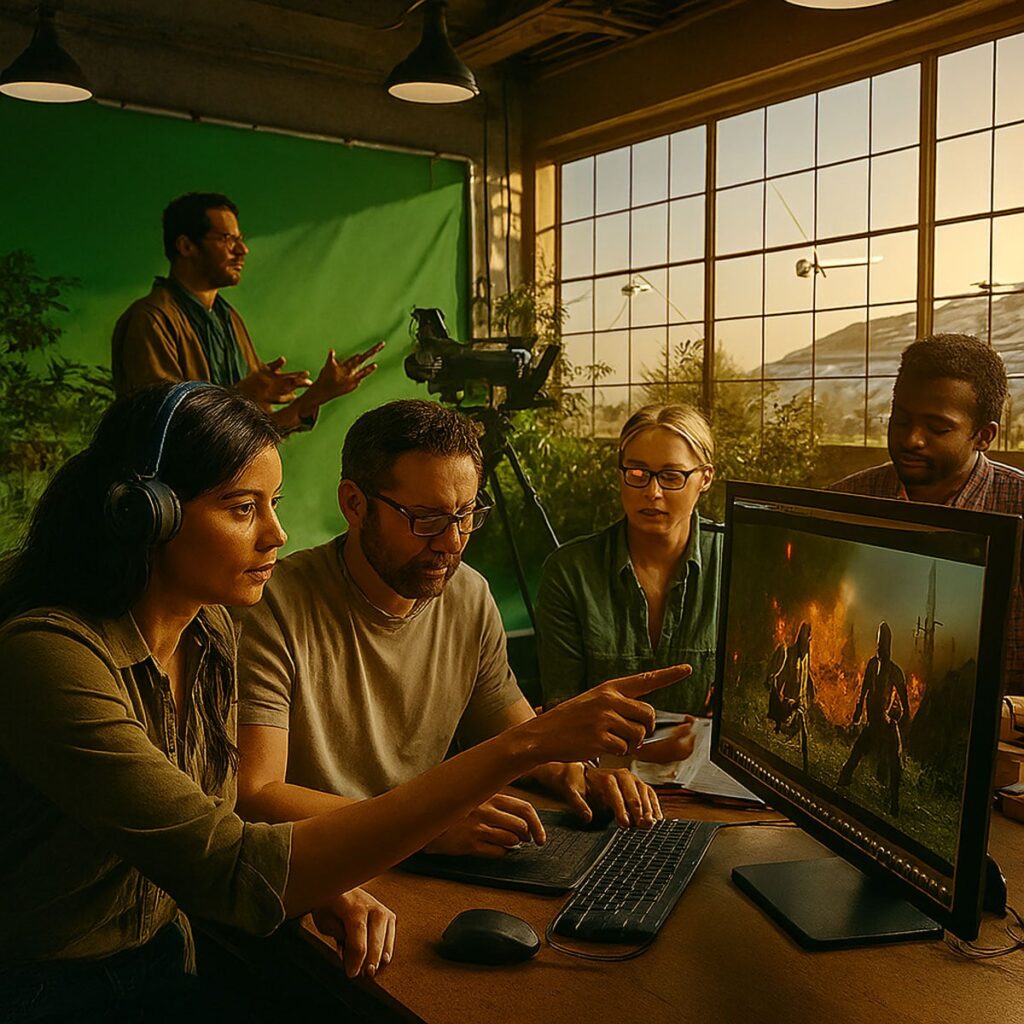From editing and colour grading to sound mixing, compositing and photo-realistic VFX, post-production is where raw footage transforms into immersive storytelling across film, television, advertising, gaming and digital media. But it’s also where energy consumption quietly spikes—especially on blockbuster-scale projects, where thousands of tons of CO₂ are generated behind the scenes.
Behind every frame of cinematic magic lies a vast amount of computing power. As studios embrace AI-enhanced workflows and high-resolution rendering, the carbon footprint of visual storytelling is becoming impossible to ignore.

The hidden cost of creativity
- Post-production can account for up to 15% of a film’s total carbon footprint.
- A single blockbuster’s VFX pipeline may generate 3,370 metric tons of CO₂—equivalent to the annual emissions of 730 cars, according to the Sustainable Production Alliance.
- The British Film Institute calculates that a 90-minute film can consume 100,000 kWh—enough to heat 20,000 homes for a day
- AI-driven rendering and real-time simulations are accelerating energy demand across animation, CGI, and motion graphics workflows
This isn’t just an environmental issue—it’s a reputational and operational one. Studios are increasingly expected to report on sustainability metrics, align with ESG (Environmental, Social, and Governance) and CSRD (Corporate Sustainability Reporting Directive) frameworks, and demonstrate carbon-conscious decision-making to clients, investors, and audiences.
Why traditional cloud HPC isn’t enough
While traditional cloud-based high-performance computing (HPC) has revolutionized post-production, it comes with some hidden costs:
- Massive electricity consumption and waste heat
- Complex cooling systems and limited transparency
- High operational costs and opaque carbon reporting
- Reduced control over environmental impact and sustainability metrics
For VFX studios, animation houses, and post-production teams working on IP-sensitive content, this model is increasingly misaligned with climate goals and client expectations.


A new model for sustainable rendering
Qarnot offers a radically different approach to cloud rendering and distributed computing. Instead of concentrating servers in energy-hungry facilities, Qarnot deploys compute nodes into buildings that need heat—such as offices, spas, swimming pools, and industrial sites.
This distributed HPC model reuses 96% of waste heat, turning rendering into a source of warmth rather than waste.
Benefits for post-production studios
- 96% reuse of waste heat
- Up to 80% lower carbon emissions
- 50% cost savings vs traditional cloud HPC
- Certified carbon reports for every task—ideal for ESG and CSRD compliance
- Sovereign cloud capabilities for IP-sensitive workflow
Studios like Mathematic, Illumination McGuff, Fortiche, and Adobe Substance 3D Assets have already adopted Qarnot to power their VFX pipelines.
For example, Mathematic, used Qarnot to render T.REX, a museum-featured documentary praised for its realism. Instead of conventional data centers, their compute heat was repurposed to warm therapeutic pools at Calicéo spas.
This saved ~3 tonnes of CO₂ per month and reducing energy use by 60%.


Built for creatives, backed by performance
Qarnot’s HPC platform supports industry-standard post-production tools including:
- Maya
- Arnold
- Blender
- BYOL (Bring Your Own Licence) software
Real-time diagnostics help reduce reruns and flag rendering errors early—saving time, compute cycles, and emissions. Hybrid cloud integration with AWS, Azure, and Google Cloud ensures secure storage and flexible deployment across global teams.
Beyond VFX and animation, Qarnot powers simulation-heavy workloads in aerospace, finance, and automotive sectors—proving that low-carbon computing can scale without compromise.
Why It matters now
As the creative industries face mounting pressure to decarbonise, sustainable rendering is no longer a niche concern—it’s a strategic imperative. Studios that act now can:
- Reduce operational costs
- Improve ESG and CSRD compliance
- Enhance brand reputation
- Lead the way in responsible innovation
Partnering for impact
HAH Software is the official UK partner for Qarnot, helping post-production studios, VFX teams, and creative technologists transition to low-carbon HPC.
Whether you’re rendering immersive worlds, building virtual sets, or planning your next animated feature, we can help you build a smarter, greener pipeline.

Book a free discovery call to explore how sustainable HPC can support your creative goals.
